The Cornell Lab Bird Academy › Discussion Groups › Joy of Birdwatching › Activities: Exploring Bird Habitats
-
I’ve had so much fun 🤩
-
Activity 1: In the heart of the city around our building we’ve seen Killdeer… which is strange spotting a bird that has the movements/body of a shorebird hours away from the ocean. We’ve noticed that it loves the gravel areas around our apartment building as well as the reservoir outside of the building that fills with water during heavy rains. At a nearby nature preserve we would never see these, but we’ve spotted Mallards, Wood Ducks, Herons and Kingfisher.
-
I've noticed the same thing. They seem to spend more time in gravel and rocks than on shores. Here is a Killdeer I found over her eggs, on rocks with rocks going on infinitely in the background. Its fascinating how all of these other birds spend so much time making nice soft, hidden nests and then a mommy-to-be Killdeer sees a gravel parking lot and thinks "Perfect."

-
-
I had fun
-
Activity One: We live in the Adirondack Mountains. The main habitats are woods and water. The woods are primarily songbirds (and turkeys!--just saw some tiny babies a few days ago) and water for us means lakes and ponds. There you see lots of water fowl like loons, mallards, swans, geese etc.. Activity Two: We agree with all that has been written. Big takeaway for us was the number of completed checklists in Arizona compared to England, esp central London. Arizona wins!
-
2. A comparison of the bird species at the two sites in Arizona suggests that Roger Road has more water (coots, herons, mallards, ducks) than Mt. Lemmon, which presumably has higher altitudes for hawks, owls and falcons. Both clearly have varied habitats and therefore large numbers of varied species (Roger Road: 257 listed!; Mt. Lemmon: 128), though Roger Road wins out easily in numbers. Both list flycatchers,swallows, woodpeckers, hummingbirds, warblers, buntings, sparrows, orioles so either there is some overlap ecologically or these species adapt to different environments.
-
Totally agree with you! I noticed the same. And I personally feel happy because I was able to imagine those two places by just looking at the birds lists, before doing a research about each of the places.
-
-
Activity 2: Down House: Birds present in towns and buildings such as different kind of pigeons. There are birds that live in open habitats with some woods as farmland such as hawks, kestrels, and woodpeckers. Also there are birds that are present in aquatic habitats as different kinds of gulls. Sevenoaks: Most of the birds are present in aquatic habitats like swamps, marshes, ponds and lakes.
-
The first thing I noticed, too, was that at Sevenoaks there were more aquatic birds. I'm glad other people noticed what I noticed!
-
-
Activity 1: Dora Kelley Nature Park in Alexandria, VA: I can identify at least two habitats where different kind of birds live, a deciduous forest where I identify at least three local species sharing the habitat: Carolina Chickadee, Tufted Titmouse, and White-breasted Nuthatch. Another species that breeds in this area in the summer share this habitat: Acadian Flycatcher. All of them eat insects, but the Acadian Flycatcher catches them in flight. The three local birds eat seed in addition to insects and share the trunks of trees when foraging. In the same park there is another habitat, a river where I usually see at least two species: Mallards, that are omnivore and dabble to feed, and Great Blue Herons, that eat fish and wade slowly or stand still, peering into the water for prey.
-
I am fortunate to live in a neighborhood that has multiple habitats on my daily walk. As I walk down the street past the homes I can count on Northern Mockingbirds, Mourning Doves, Common Grackles and occasionally Northern Cardinals. When I get to the wooded path there is a pond that has Common Gallinule, Anhinga, Mottled Ducks and often Sandhill Cranes (especially for nesting). A little later I walk past a small lake that will haven Great Blue Herons, Great Egrets, more Mottled Ducks and occasionally Limpkin. Finally, we have a sandy scrub habitat that has a family of Florida Scrub-Jays, Red-bellied Woodpeckers and Blue Jays. Some days on my walk I'll only see about a dozen species and other days there will be nearly 30.
-
I live near a reservoir which has Herons, Cormorants, and several types of water foul. There’s also an abundance of Red Winged Blackbirds all along the edges and within the cattails. Further out from the reservoir edges are lots of swallows and flycatchers (not sure what kinds). And several different types of hawks, some falcons, and bald eagles.
-
1. Last August, I went to the beach at Ocean City, NJ, where the habitat was ocean and sand beach. No surprise: I saw an American Oystercatcher, a Common Tern, a Least Tern, and lots of Sanderlings. I think all those birds are shore birds and find their food in the ocean or in the sand. Today I went to a neighborhood park with a stream, a small woods, some tall pines and some wetland. I heard a Red-winged Blackbird, a couple Northern Cardinals, a Chipping Sparrow, a Downy Woodpecker, a Cedar Waxwing, at least one Song Sparrow, a White-eyed Vireo, a number of House Sparrows, a House Wren, a Northern Flicker and lots of American Robins. Because of the varied habitats in this small park, one finds a variety of birds (and in migration season, different kinds of warblers) and it is a favorite with local ornithologists. Some of these birds are common in backyards too, especially the robins, sparrows and cardinals, so they seem more adaptable to various foods or ways to eat.
-
Activity #1: There is a very large cemetery near my home. In this cemetery are numerous old coniferous and deciduous trees, as well as open lawns. Around these trees and open areas, it is easy to spot American Robins, Cardinals, Blue Jays, European Starlings, and House Sparrows. But on the other side of the cemetery, there is a large man-made lake. Here it is easy to spot Mallard Ducks and Canada Geese. The same is true for the City of Chicago as a whole. Near the lakefront (Lake Michigan), many shorebirds, like Herring Gulls can be found. But head west of the city, and you will see different species.
-
Found the beautiful gray throated chat in a yucatan forest several miles from my home. Just outside the forest on a taller lone tree the laughing falcon was singing.
-
We went birding with our Master Naturalist class. At a lake, there were tree swallows and northern rough-winged swallows (and many other types of waterfowl- such as wood ducks, blue-winged teal, mallards, ring-necked ducks, Great blue herons, and Canada geese). At a pond where I walk frequently, I never see swallows. I only occasionally see Canada geese. At the lake, the birds are visible, but at the pond, the birds mostly stay in the forest.
-
Activity 2: Roger Road and Mt. Lemmon Roger Road has a mixed environment with water to support waterfowl, shorebirds and gulls. It also has open fields and scrubby areas for doves, pigeons, quail and roadrunners. Mt. Lemmon also is a mixed environment. It has more trees than Roger Road, as it supports many species of songbirds and birds of prey, but it also has open areas like Roger Road that support doves, pigeons, quail and turkey too.
-
Activity 1: My backyard is a small city plot with old oak trees that I underplanted with cedars, Japanese Maples, Rhododendron, shrubs, and perennials. There are a lot of places for birds to hide and forage. We get a lot of different songbirds, woodpeckers and the occasional visit from a Cooper’s Hawk. In the winter we generally have 15 different species. As the migration begins the number species increases to include passing warblers, other sparrows, wrens and thrushes as they all poke through the bushes, trees and leaf litter for food. About 1 kilometre south is a Great Lake and about another kilometre west is a man-made landmass, originally formed as a breakwater in 1959. Now 60 some years have past and it has become a 500 hectare park and a recognized bird sanctuary, with breeding Cormorants and other migrating birds. I’ve not seen every bird on the park’s list. It’s a long one. A survey from 2014 recorded 316 species of birds which includes many waterfowl, shorebirds, gulls, owls, hawks, many, many songbirds and other birds. This place is a treasure trove for me. I see something new every time I visit. The photos are of a Northern Flicker in my backyard and a Red-tailed Hawk at the park. It watched it catch a rat for his dinner in front of us.


-
Herons and buntings
-
Activity 1: The swamp- in the summer, there are blue herons, sometimes ducks and Canadian Geese. We’ve even found 11 Turkey Vultures in a dead tree before! The house- smaller songbirds and Woodpeckers, sometimes there will be a Pileated Woodpecker pair that come close. Activity 2: There are species at Down House that are more chicken-like (Rose-ringed Pheasants), songbirds (Warblers and Wrens), insect-catchers (Flycatchers) and Birds of Prey (Sparrowhawks and Kestrels). These are in more rural areas with trees, open fields, some houses- the countryside. I confirmed this using Google Maps. At Sevenoaks there are definitely more waterbirds. There are Geese, Ducks, Grebes, and Cuckoos. These birds like larger bodies of water, farmland and marshes with hedges or bushes. I looked on the map- there are a group of water reserves close by and a large country club (we know the geese like this!).
-
Activity one: I recently retired to Cape Cod, Massachusetts where there are numerous nature preserves ideal for birds and birders. In my neighborhood, which is near a very large kettle pond and a short drive to the ocean, the variety of birds is just wonderful. We have all the common songbirds coming to the feeder, a nice variety of species that live in the oak and pine woods, and countless waterfowl. As someone new to birding, I hardly know where to begin. Besides seeing the ones at the feeder each day (most of which were also common where I lived in Connecticut), I recently spotted a flock of Cedar Waxwings in bushes closer to the pond. Striking birds. The pond regularly draws a pair of Mute Swans, Canadian geese, Mallards, Hooded Mergansers, and more. I still have so much to learn about the waterfowl.

-
In my backyard, I see these birds in winter: Northern Cardinal, Dark-eyed Junco, Downy Woodpecker, Black-capped Chickadee, European Starling, Mourning Dove, Red-bellied Woodpecker, American Goldfinch, White-breasted Nuthatch, Blue Jay, House Finch, and House Sparrow. The lagoon at the local park is the habitat of the Canada Goose. I took this

 photo of the House Sparrows in their winter plumage in my backyard. I took this photo of the Canada Goose in the local park.
photo of the House Sparrows in their winter plumage in my backyard. I took this photo of the Canada Goose in the local park. -
Activity 2: Like other participants in the discussion I saw there were more small birds at Down House - birds more of woodland, scrub and open areas. Before I looked at the comments on eBird and the satellite map I also thought there might have been some water at Down House, because there were some gulls observed (but it turns out they were flyovers). For Sevenoaks I was sure there had to be extensive water habitats because of the species of shorebirds, waterfowl and marsh birds recorded there. Since there was a higher total of species recorded it also seemed to me there had to be more varied types of habitat than at Down House. And I was right...:-)
-
Activity 1:
- Marsh Habitat
- Great Blue Heron
- Belted Kingfisher
- Anhinga
- Little Blue Heron
- Hardwood Habitat
- Barred Owl
- Pileated Woodpecker
- Downy Woodpecker
- Blue-gray Gnatcatcher
- Warblers
- Marsh Habitat
-
We have big live oak trees in our back yard in central Texas. They are part of a canopy of live oak trees that stretch through our neighbors' back yards and ours. We see several species of woodpecker, and carolina chickadees, black crested titmice, carolina wrens, lesser goldfinches and northern cardinals all seem to love it. We also see eastern blue jays and various raptors perched in the tops of the trees from time to time.
-
In parkland near my home there are a number of Sugar Gum Trees. I noticed a number of Rainbow Lorikeets ( Trichoglossus haematodus) feeding on nectar and pollen of the trees small flowers and buds. Great to watch as they are constantly chatting and screeching. Often quite acrobatic while meandering amongst the branches :-)

-

 i went birding in a spot near the YMCA where I swim. There’s a swampy area next to the bike path. It was a good spot for birds! I saw yellow-rumpled warblers in the branches of young trees next to the water. There was a rusty blackbird very near by, with one eye on me while foraging in the mud and vegetation. A red-bellied woodpecker was in a large tree. A single shoveler duck was snorking around (excuse the technical jargon) in the shallow water, while a group of wood ducks cruised around. A phoebe in a dead tree on the other side of the path was dashing around hunting for insects.
i went birding in a spot near the YMCA where I swim. There’s a swampy area next to the bike path. It was a good spot for birds! I saw yellow-rumpled warblers in the branches of young trees next to the water. There was a rusty blackbird very near by, with one eye on me while foraging in the mud and vegetation. A red-bellied woodpecker was in a large tree. A single shoveler duck was snorking around (excuse the technical jargon) in the shallow water, while a group of wood ducks cruised around. A phoebe in a dead tree on the other side of the path was dashing around hunting for insects. -
The two habitats where I see birds in my daily life are my backyard and the shoreline of the SF Bay. There is a large old pine tree in my backyard that the songbirds love. Also hummingbirds like the fruit trees. a number of birds like the open dirt grass are of our yard too. At the beach only 1 mile away the birds are completely different. Even though we are close to the beach it's really rare to hear or see seagulls at our house. At the beach there are marches that host a wide array of shorebirds. Plovers, Godwits, Sandpipers, egrets. I'm still working on my id'ing of all the shorebirds. out farther in the water -Pelicans, terns. There is a tree by the shopping center that is covered with Cormorants. It's impressive right next to a busy road.
Read More:
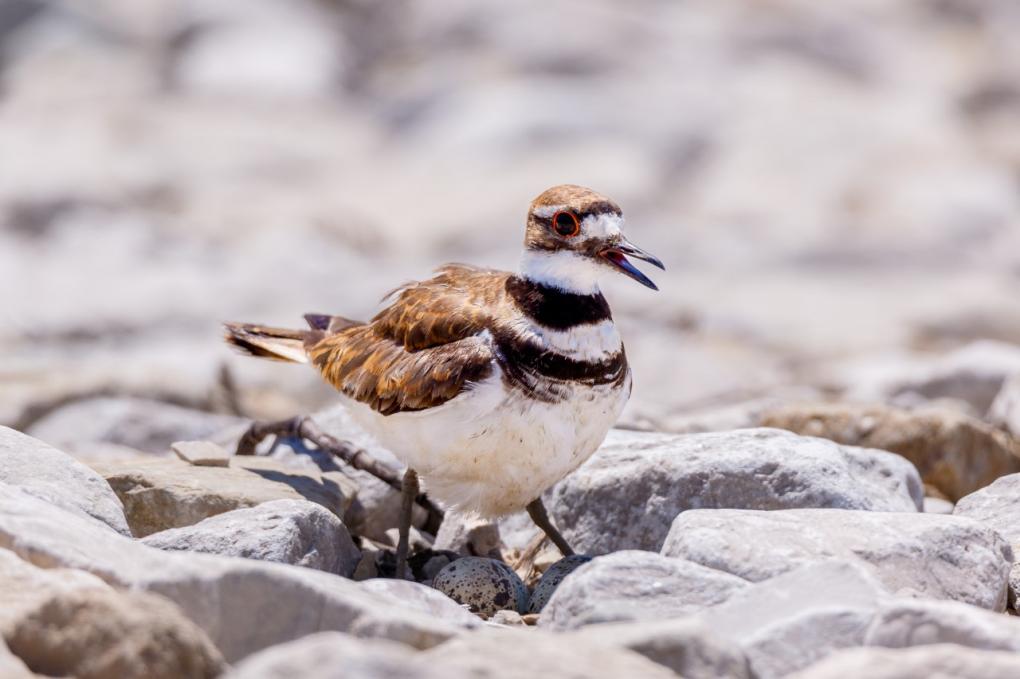
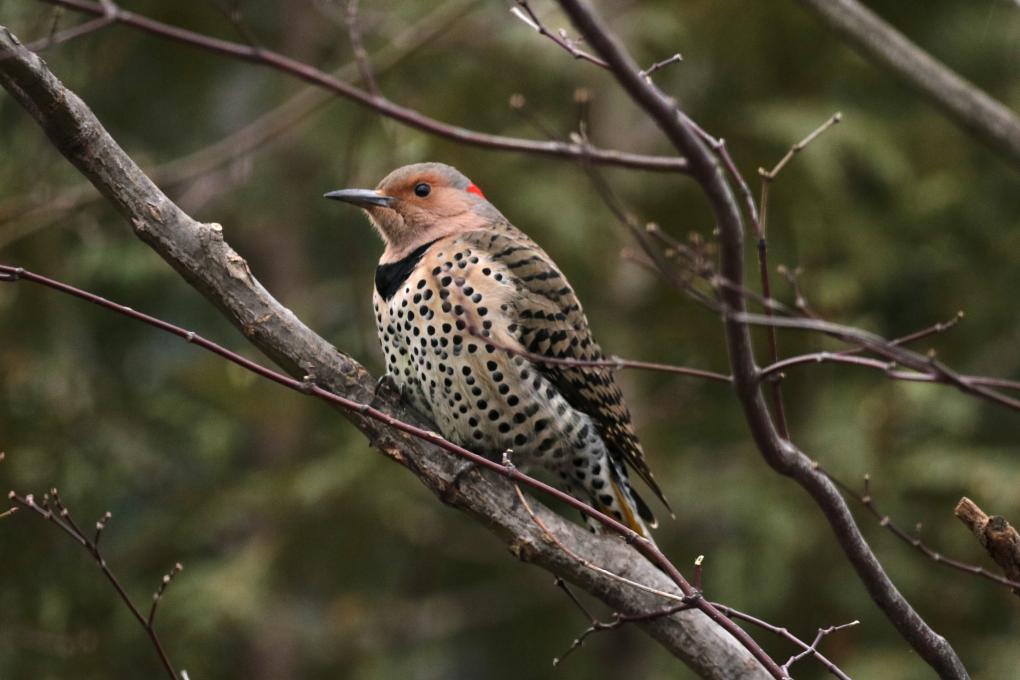
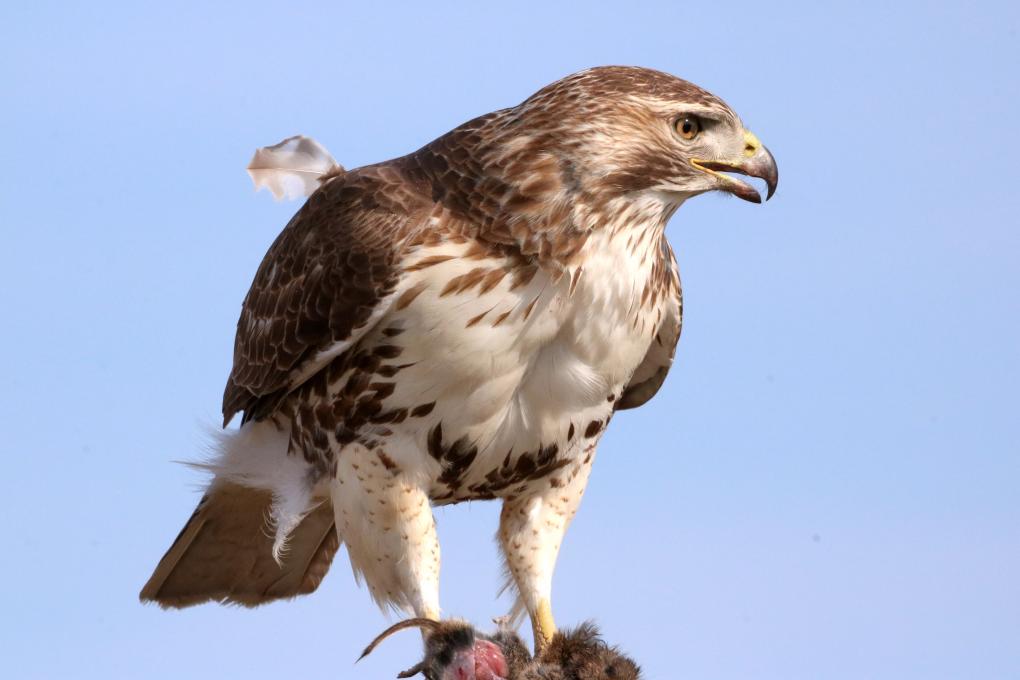
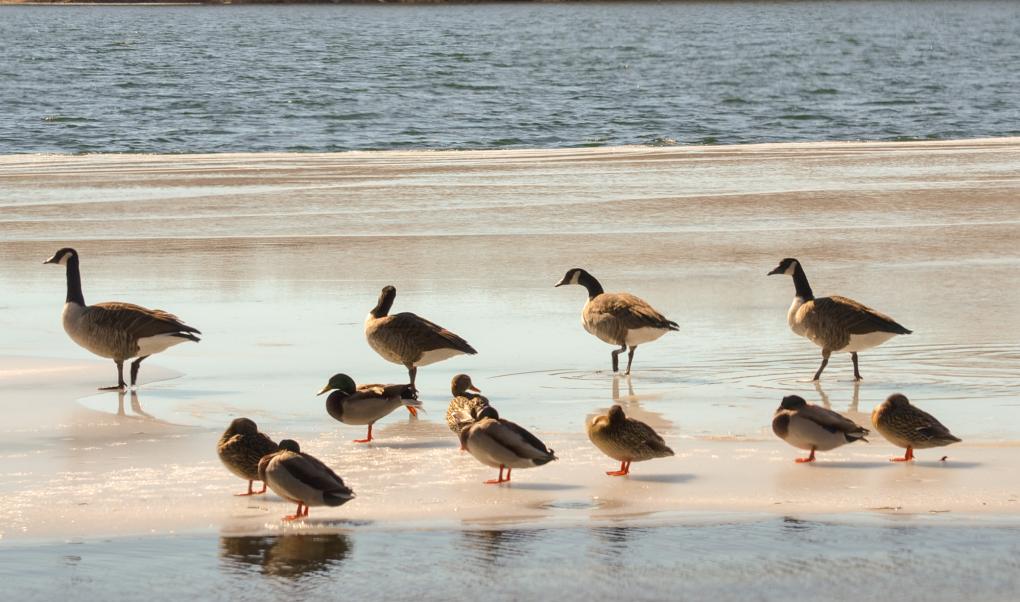

 photo of the House Sparrows in their winter plumage in my backyard. I took this photo of the Canada Goose in the local park.
photo of the House Sparrows in their winter plumage in my backyard. I took this photo of the Canada Goose in the local park. 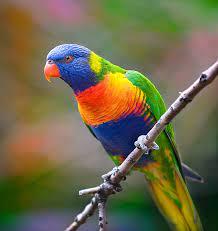

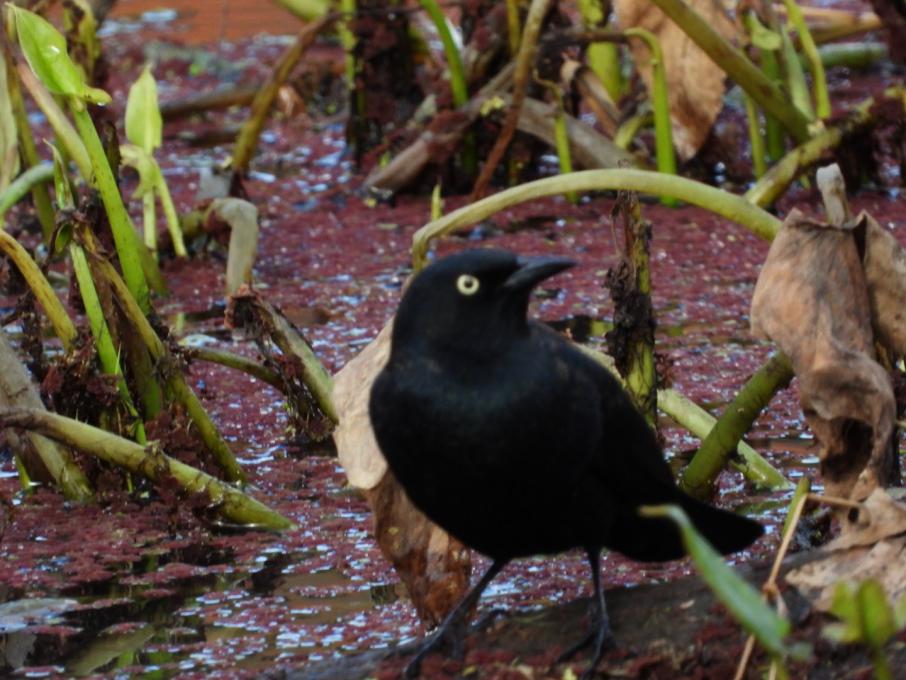 i went birding in a spot near the YMCA where I swim. There’s a swampy area next to the bike path. It was a good spot for birds! I saw yellow-rumpled warblers in the branches of young trees next to the water. There was a rusty blackbird very near by, with one eye on me while foraging in the mud and vegetation. A red-bellied woodpecker was in a large tree. A single shoveler duck was snorking around (excuse the technical jargon) in the shallow water, while a group of wood ducks cruised around. A phoebe in a dead tree on the other side of the path was dashing around hunting for insects.
i went birding in a spot near the YMCA where I swim. There’s a swampy area next to the bike path. It was a good spot for birds! I saw yellow-rumpled warblers in the branches of young trees next to the water. There was a rusty blackbird very near by, with one eye on me while foraging in the mud and vegetation. A red-bellied woodpecker was in a large tree. A single shoveler duck was snorking around (excuse the technical jargon) in the shallow water, while a group of wood ducks cruised around. A phoebe in a dead tree on the other side of the path was dashing around hunting for insects.